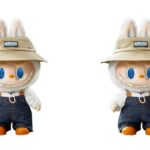Introduction to Pyntekvister
Pyntekvister is more than just a craft; it’s a vibrant expression of culture and creativity that has woven its way through generations. Originating from humble beginnings, this art form has captivated hearts and minds, transforming simple materials into intricate designs. As we dive deeper into the world of pyntekvister, we’ll uncover its rich history, traditional uses, and how contemporary artisans are breathing new life into this age-old practice.
The journey of pyntekvister is as colorful as the creations themselves. With each twist and turn in its evolution, this craft continues to resonate with both seasoned artists and curious newcomers alike. Join us as we explore how tradition meets innovation in the realm of pyntekvister today!
Historical Roots of Pyntekvister
The origins of pyntekvister trace back to the rich tapestry of Nordic folklore. Traditionally, these intricate woven pieces held deep cultural significance. They were often created during festive seasons and special occasions, reflecting community spirit.
Crafted from natural materials like wool and linen, each design was unique. Patterns told stories—some represented ancient myths while others celebrated nature’s beauty. Each stitch carried meaning.
Pyntekvister also served practical purposes in homes. They adorned walls and furniture, enhancing warmth and comfort in long winters. This functional artistry helped preserve traditions passed down through generations.
As time progressed, these crafts became symbols of identity for various regions within Scandinavia. The craftsmanship demonstrated not only skill but a connection to ancestry that remains vital today.
Traditional Uses of Pyntekvister
Pyntekvister, often characterized by intricate patterns and vibrant colors, has deep roots in cultural traditions. Historically, these handcrafted items have adorned homes during festive occasions. Their beauty transcends mere decoration; they hold stories of heritage and community.
In many cultures, pyntekvister were used to celebrate seasonal changes. For example, during harvest festivals, families would display them as symbols of gratitude for a bountiful crop.
Additionally, these crafts served practical purposes too. Many utilized pyntekvister as protective charms or blessings hung above doorways to invite good fortune into the home.
The artistry involved in creating pyntekvister is not just about aesthetics but also about connecting generations. Elders pass down techniques and designs to younger artisans, ensuring that this timeless craft remains alive within communities worldwide.
Modern Adaptations and Innovations in Pyntekvister Crafting
Today, pyntekvister is experiencing a vibrant transformation. Artisans are bringing fresh perspectives to this traditional craft. They blend age-old techniques with contemporary designs, making it appealing for modern audiences.
New materials play a significant role in these adaptations. Instead of solely using the classic wood and paper, crafters experiment with metals and eco-friendly products. This opens new avenues for creativity while maintaining the essence of pyntekvister.
Digital tools are also revolutionizing how artists create their works. Software programs allow them to visualize intricate patterns before they start crafting by hand. This fusion of technology and tradition breathes life into an ancient practice.
Workshops focused on innovative approaches attract younger generations eager to learn. These sessions encourage collaboration among creators, resulting in unique projects that push boundaries while honoring history. The future looks promising as pyntekvister evolves alongside cultural shifts and artistic exploration.
How Social Media is Impacting the World of Pyntekvister
Social media is reshaping the landscape of pyntekvister in exciting ways. Artists and crafters are now showcasing their work across various platforms, reaching audiences far beyond their local communities.
Instagram, Pinterest, and TikTok have become vibrant galleries for these intricate creations. Users share tutorials that inspire others to try their hand at this traditional craft. The hashtag #pyntekvister brings together enthusiasts from around the globe.
Engagement through comments and shares fosters a sense of community among creators. This interaction encourages collaboration and innovation in design techniques.
Moreover, social media has opened doors for artisans to sell their pieces directly to consumers. What was once limited to local craft fairs is now accessible worldwide with just a click.
As trends evolve rapidly online, pyntekvister finds itself blending with contemporary aesthetics while retaining its cultural significance. The interplay between tradition and modernity creates endless possibilities for this beloved craft.
The Future of Pyntekvister: Predictions and Possibilities
The future of pyntekvister is bright and brimming with possibilities. As artisans explore new materials, we may see eco-friendly options gaining traction. Recycled papers or natural fibers could redefine traditional designs.
Technology will also play a pivotal role in this craft’s evolution. Virtual workshops and online tutorials can connect artists worldwide, allowing for knowledge sharing and collaboration like never before.
Customization might become a central theme as consumers seek personalized items that reflect their individual styles. This shift could lead to unique interpretations of classic patterns.
Moreover, the incorporation of augmented reality could enhance how people experience pyntekvister art, making it interactive and engaging. Imagine creating pieces that respond to touch or light!
As communities rally around these crafts, we’ll likely witness an increase in local markets celebrating handmade goods while preserving cultural heritage through innovative practices.
Conclusion: The Timelessness and Evolution of Pyntekvister
Pyntekvister is more than just a craft; it’s a living tradition that continues to evolve. Its roots are deep, tracing back through generations and intertwining with cultural heritage. Yet today, it finds itself at the intersection of history and modern innovation.
As artisans embrace new materials and techniques, they breathe fresh life into traditional practices. The use of digital platforms has opened doors for makers to showcase their work globally, fostering a sense of community among creators and enthusiasts alike. Social media serves as both an inspiration platform and marketplace, allowing pyntekvister to reach audiences far beyond its origins.
Looking ahead, the future of pyntekvister seems bright. With ongoing interest in sustainable crafts and unique handmade items, this ancient art form is poised for further growth. Whether through workshops or online tutorials, newcomers can discover the beauty behind each intricate piece while seasoned crafters continue to push boundaries.
The journey of pyntekvister illustrates how craftsmanship can endure over time yet remain relevant in today’s fast-paced world. As artists innovate and share their stories, they ensure that this remarkable craft will be cherished by future generations—proving that some traditions not only withstand the test of time but flourish within it.






